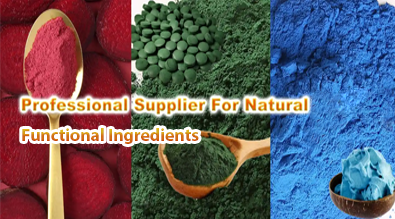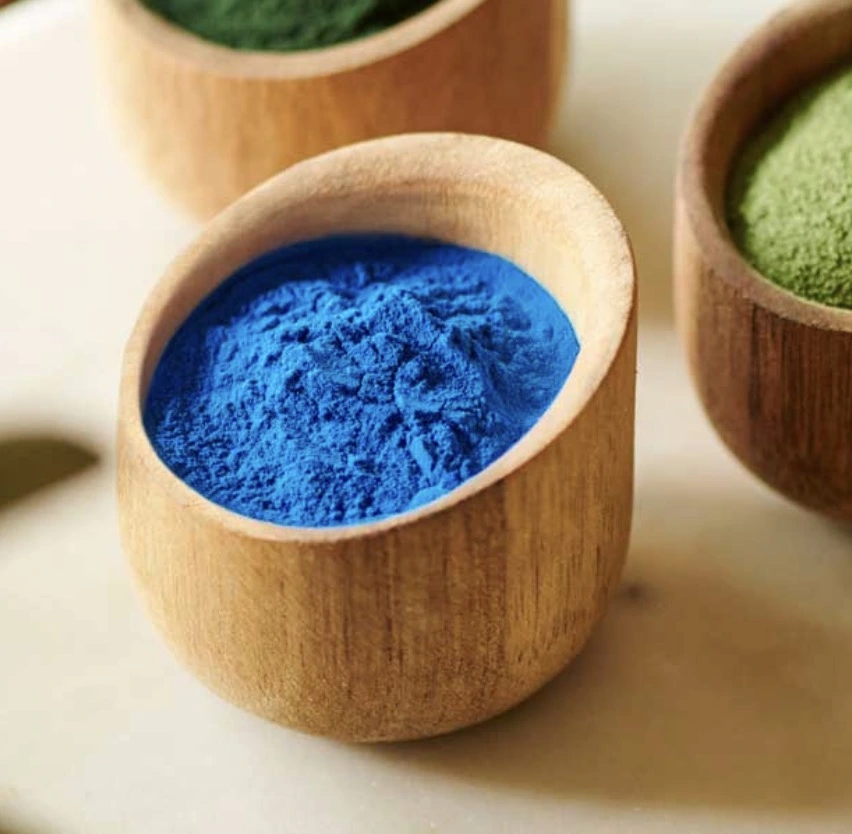Lycopene as a Natural Food Coloring: Safe and Vibrant for Dishes
As consumers increasingly seek out natural ingredients, food manufacturers are turning to plant-based colorants like lycopene to create vibrant, appealing products without artificial additives. Lycopene, the compound responsible for the rich red hue of tomatoes and other fruits, offers a safe and effective way to impart an appetizing red or pink color to foods and beverages. This powerful antioxidant not only enhances visual appeal but may provide health benefits as well. Let's explore why it is emerging as a top choice for natural food coloring and how it can be used to elevate the appearance and nutritional value of various dishes.
Why Lycopene is the Best Natural Food Dye?
Lycopene stands out among natural food colorants for several compelling reasons:
- Vibrant hue: Lycopene provides a beautiful red to pink color that remains stable during processing and storage. Its rich pigmentation allows for effective coloring at relatively low concentrations.
- Heat stability: Unlike some natural colorants that degrade when exposed to high temperatures, it maintains its vibrant hue even after cooking or pasteurization. This makes it ideal for use in processed foods and beverages.
- Clean label appeal: As a naturally-occurring compound found in familiar foods like tomatoes and watermelons, lycopene aligns with consumer demand for recognizable, plant-based ingredients.
- Potential health benefits: It is a potent antioxidant that may offer protective effects against certain diseases. Using it as a colorant can boost the nutritional profile of foods.
- Versatility: It can be incorporated into a wide variety of products including dairy, baked goods, confectionery, and beverages. It works well in both water-based and oil-based applications.
The natural origin and multifunctional properties of lycopene make it an attractive option for food manufacturers looking to clean up their ingredient lists without sacrificing visual appeal. As an added bonus, lycopene's antioxidant activity may help extend the shelf life of some products by inhibiting oxidation.

How Lycopene Enhances the Color of Your Recipes?
Incorporating lycopene as a natural colorant can transform the appearance of various dishes and food products. Here are some ways lycopene can be used to enhance color:
- Dairy products: Lycopene can impart a pleasing pink hue to yogurts, ice creams, and other dairy-based treats. Its oil-soluble nature allows for smooth incorporation into creamy textures.
- Baked goods: Adding lycopene to batters and doughs creates visually striking red velvet cakes, strawberry-toned muffins, or pink-hued cookies without artificial dyes.
- Beverages: Lycopene can give a natural boost of color to fruit juices, smoothies, and flavored waters. It's particularly effective in creating vibrant pink lemonades or grapefruit-inspired drinks.
- Confectionery: Gummies, hard candies, and other sweets can benefit from lycopene's ability to provide consistent coloration throughout the product.
- Sauces and dressings: It can enhance the reddish hue of tomato-based sauces or add a rosy tint to creamy dressings.
- Plant-based meat alternatives: As the market for meat substitutes grows, lycopene offers a natural way to mimic the color of raw or cooked meat products.
When using lycopene as a colorant, it's important to consider factors like pH, temperature, and interaction with other ingredients to achieve optimal results. Professional food scientists can help determine the ideal formulation and processing conditions for each application.

Is Lycopene Safe for Food: Benefits and Considerations?
Lycopene has a strong safety profile as a food ingredient, backed by extensive research and regulatory approvals. Here are some key points regarding the safety and benefits of using it in food products:
Safety Profile
- Regulatory status: Lycopene is approved as a food coloring agent in many countries, including the United States (FDA) and European Union (EFSA). It's considered Generally Recognized as Safe (GRAS) by the FDA.
- Natural occurrence: Humans have been consuming lycopene-rich foods like tomatoes for centuries without adverse effects. The compound is already part of a typical diet.
- Low risk of allergies: Lycopene allergies are extremely rare, making it a safer option for those with sensitivities to artificial dyes.
- No known toxicity: Studies have not identified any significant toxic effects from lycopene consumption, even at high doses.
Potential Health Benefits
- Antioxidant activity: It is a powerful antioxidant that may help protect cells from oxidative damage caused by free radicals.
- Heart health: Some research suggests that lycopene consumption may support cardiovascular health by improving cholesterol levels and reducing inflammation.
- Skin protection: Dietary lycopene may offer some protection against UV-induced skin damage, though it's not a substitute for sunscreen.
- Prostate health: Several studies have found associations between higher lycopene intake and reduced risk of prostate cancer, though more research is needed to confirm a causal relationship.
Considerations for Use
While lycopene is generally safe and beneficial, there are a few considerations to keep in mind:
- Bioavailability: It is better absorbed when consumed with dietary fats. Food formulators may need to account for this when developing low-fat products.
- Stability: Although more stable than many natural colorants, the product can still degrade over time when exposed to light, oxygen, or extreme pH conditions. Proper packaging and storage are important.
- Dosage: While there's no official recommended daily intake for lycopene, most studies on its health benefits have used doses ranging from 8-30 mg per day. Food manufacturers should consider appropriate levels for their products.
- Interactions: In rare cases, very high lycopene intake might interact with certain medications. Consumers with specific health conditions should consult their healthcare provider.

Conclusion
Lycopene offers a compelling solution for food manufacturers seeking natural, vibrant coloring options that align with consumer preferences for clean labels and potential health benefits. Its stability, versatility, and safety profile make it well-suited for a wide range of applications in the food and beverage industry. As research continues to uncover the potential health advantages of product, its use as both a colorant and functional ingredient is likely to grow.
For those interested in exploring lycopene as a natural food coloring option or learning more about innovative plant-based ingredients, Yangge Biotech Co., Ltd. offers expertise and high-quality products to meet your needs. Contact us at info@yanggebiotech.com to discuss how we can support your product development goals with our range of natural extracts and coloring solutions.
References
1. Johnson, E. J. (2019). The role of lycopene in human health and nutrition. Annual Review of Food Science and Technology, 10, 473-495.
2. Srivastava, S., & Srivastava, A. K. (2020). Lycopene: Chemistry, biosynthesis, metabolism and degradation. Food Research International, 136, 109202.
3. Mezzomo, N., & Ferreira, S. R. (2016). Carotenoids derived from natural sources: A review on extraction and application as functional food ingredients. Food and Bioprocess Technology, 9(5), 735-754.
4. Gul, K., Tak, A., Singh, A. K., Singh, P., Yousuf, B., & Wani, A. A. (2015). Chemistry, encapsulation, and health benefits of β-carotene - A review. Cogent Food & Agriculture, 1(1), 1018696.
5. Saini, R. K., Rengasamy, K. R., Mahomoodally, F. M., & Keum, Y. S. (2020). Protective effects of lycopene in cancer, cardiovascular, and neurodegenerative diseases: An update on epidemiological and mechanistic perspectives. Pharmacological Research, 155, 104730.

Based on your location and order quantity, you will have the opportunity to receive a limited time free shipping promotion!

Who we are


